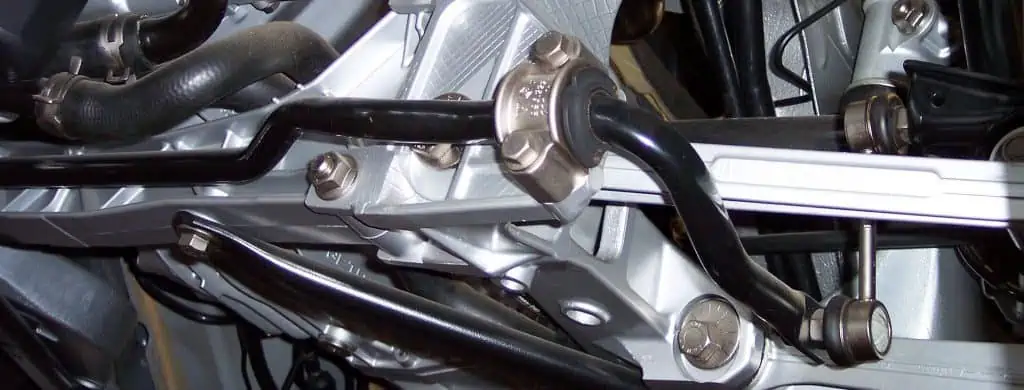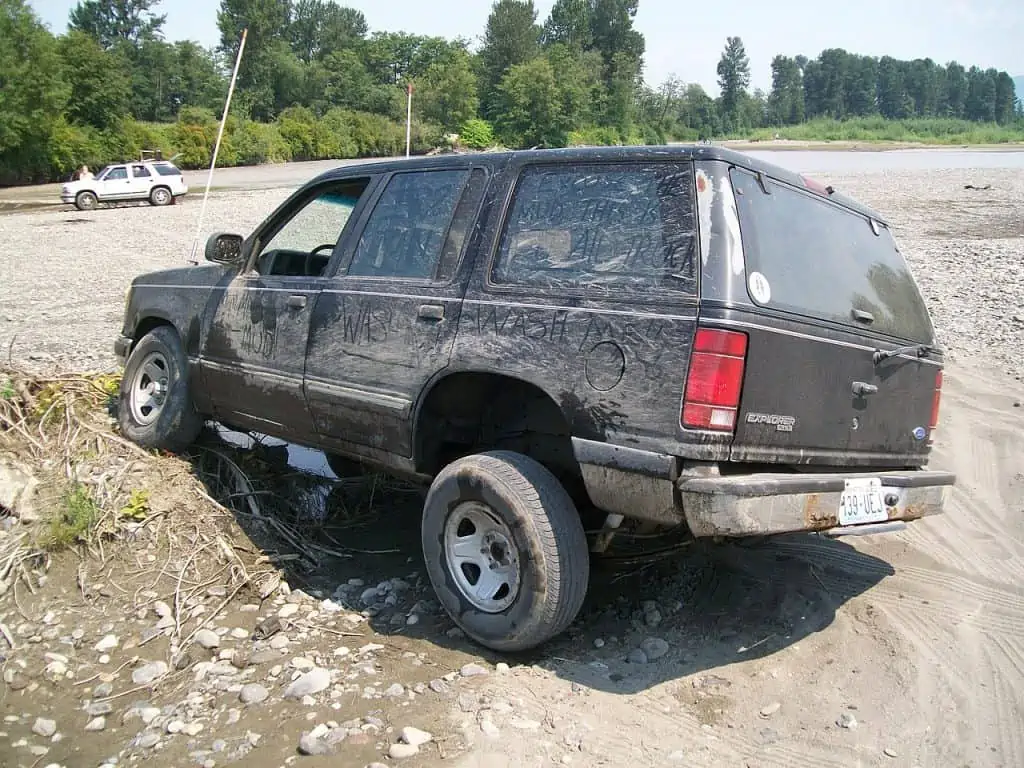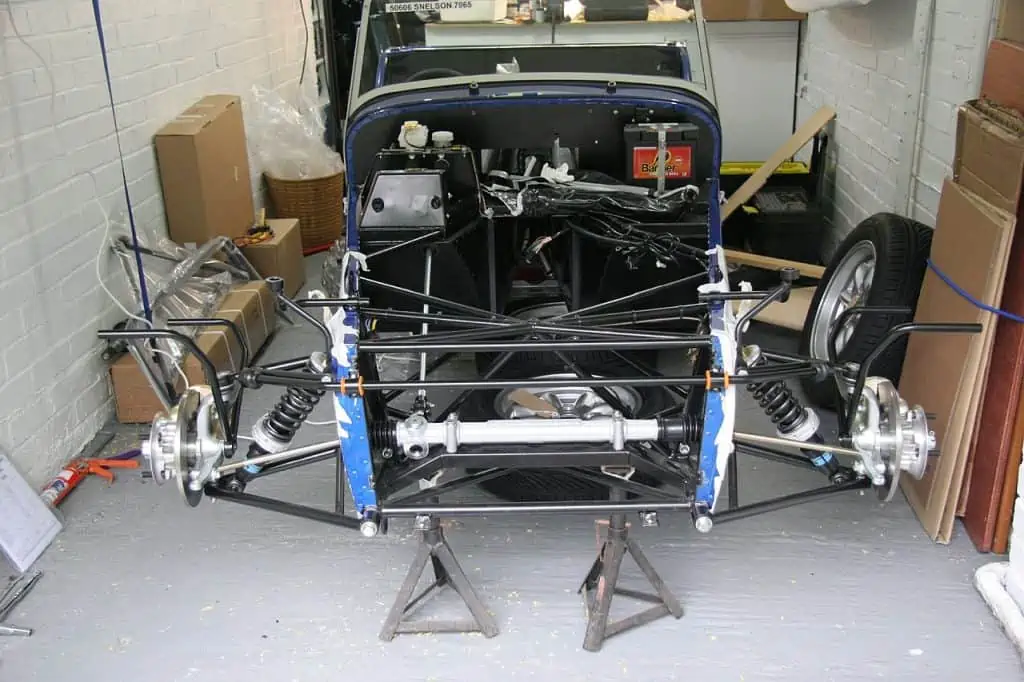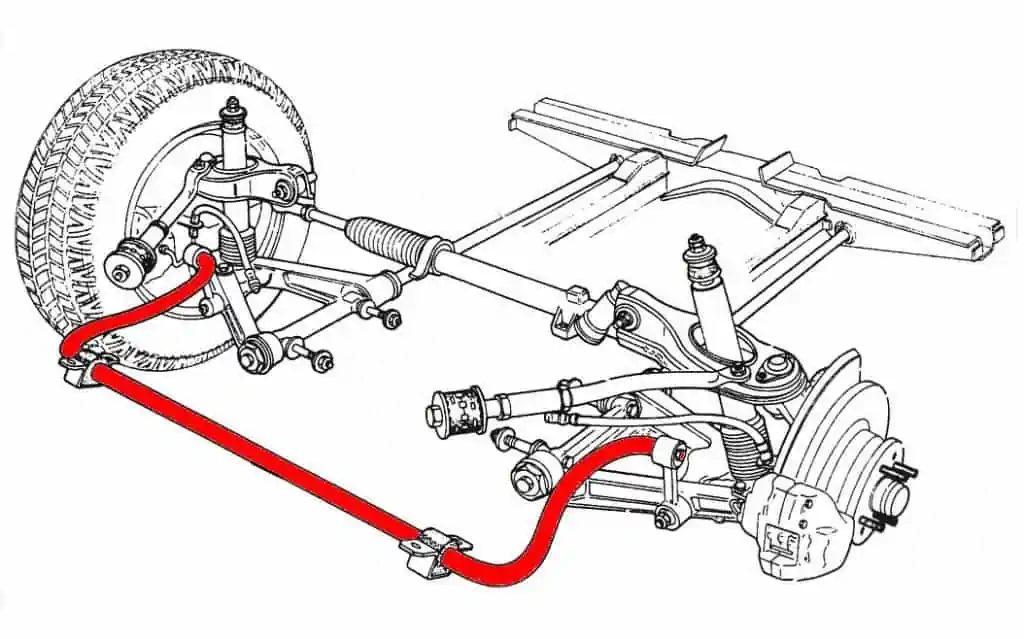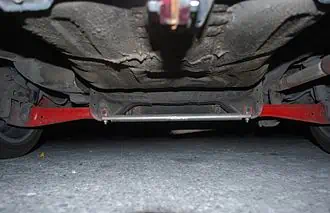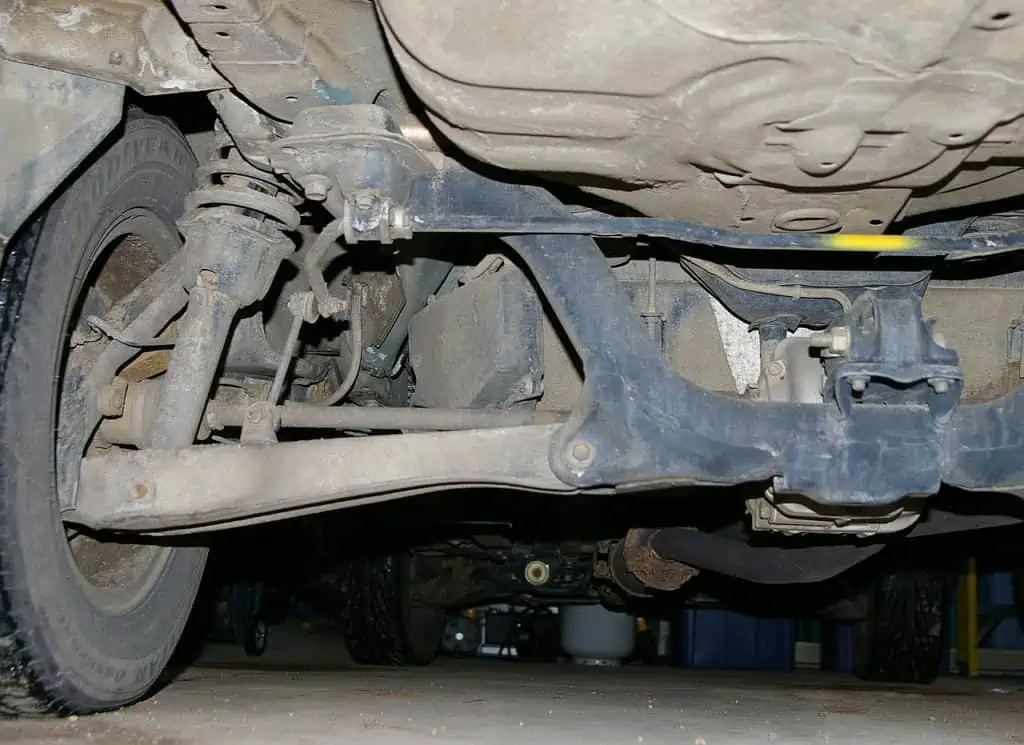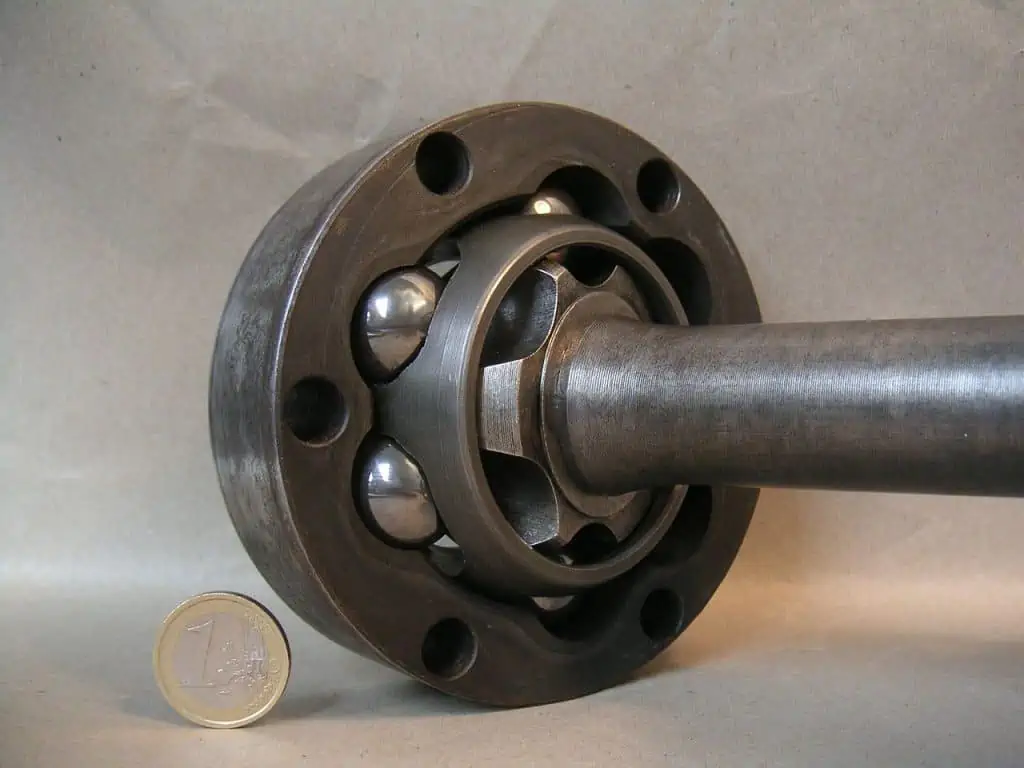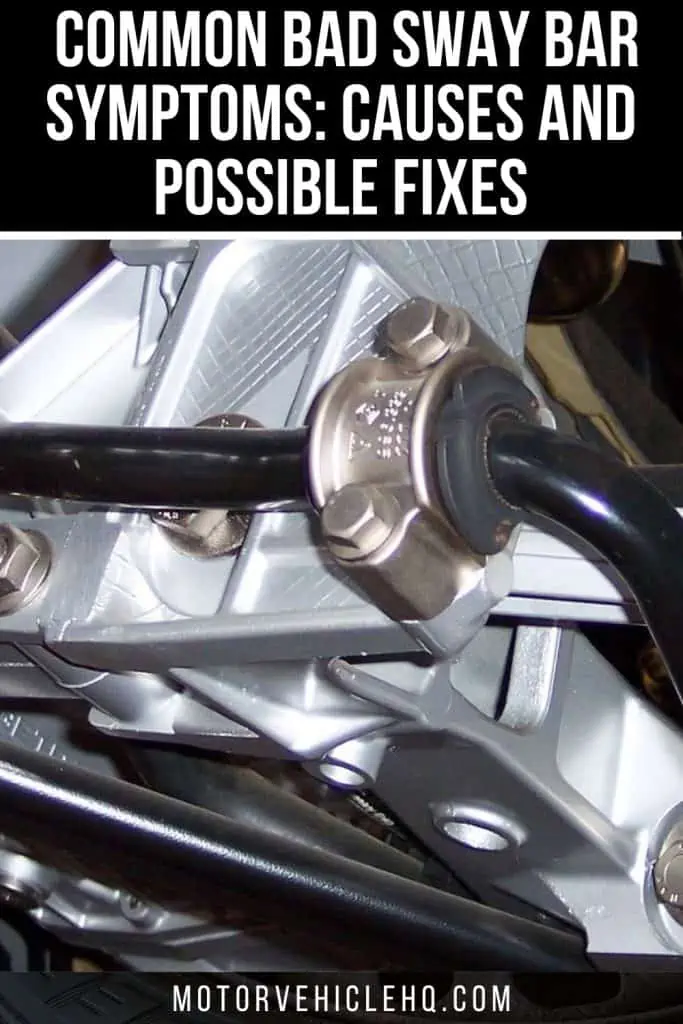Your vehicle has several parts that contribute to its stability and handling. This comprises the sway bar as well as the wheel bearings, CV joints, and suspension springs. The sway bar affects your car’s handling greatly while receiving little attention.
Although the sway bar will survive for a very long period, it will eventually wear out. Your car’s handling will begin to feel odd when the sway bar wears down, and you will need to replace it. We’ll go through how sway bars function, how much they cost to change, and why you should do so.
The last thing you want to happen when driving your vehicle around a bend at a somewhat high speed is for two of your tires to lift off the ground. The result might be that your vehicle flips over on you.
Fortunately, owing to the sway bar that is mounted on the bottom of most drivers’ cars, this won’t happen to them. So, what exactly is a sway bar and how does it operate? Today, we’re going to learn everything there is to know about it, including what to do if your car’s sway bar ever gives you trouble.
A Sway Bar: What Is It?
We must first address one straightforward question: “What is a sway bar?” before discussing what it accomplishes and why it is so crucial to your vehicle.
A sway bar, also known as a stabilizer bar, is a U-shaped steel bar that is joined to both of your car’s front wheels and is placed carefully beneath your vehicle. Its main objective is to prevent your vehicle from rolling over when you make rapid turns or other motions in it.
A sway bar in black color by Stahlkocher / CC BY-SA 3.0. A sway bar also called a stabilizer bar, is a U-shaped steel bar that is precisely positioned underneath your car and connected to both of its front wheels. Its primary goal is to stop your car from rolling over when you make sudden turns or other movements in it.
Sway bars have existed for a very long time. The first sway bar was developed in 1919, yet they weren’t a part of the first vehicles ever built. It was created by a Canadian inventor by the name of Stephen Coleman.
Since then, practically all vehicles that leave the manufacturing line have had sway bars. They’re a crucial component of a car’s suspension system and have probably stopped numerous accidents from ending in fatalities and injuries. They also help to keep vehicles themselves safe while driving.
What Is the Purpose of a Sway Bar In a Car?
We want to move on to discussing what a sway bar does now that you are aware of the definition of a sway bar. When it comes down to it, while appearing to be a rather basic part, its function is quite complex. Once you comprehend how a sway bar protects you and your car, you’ll have a greater appreciation for it.
The sway bar in your car is attached to the front two wheels, as we just described. Your car’s body will roll when you make a turn because of the weight shifting from one side to the other. Your vehicle undergoes what is known as “body roll” or, perhaps more aptly, “sway” when this occurs.
At that time, your sway bar engages and assists you in maintaining greater control of your vehicle than you otherwise could. It functions to lessen body roll or sway so that your vehicle may remain level even as you turn it.
You might not even be aware of it occurring because it all happens in a couple of milliseconds. But even if you’re traveling far faster than is prudent, you’ll notice that your vehicle never tips over while you’re making a corner.
Your car’s sway bar will ensure that the weight is distributed properly so that it never tips or rolls over while you are driving as long as it is in good working order.
What are the Common Bad Sway Bar Symptoms?
Most of the time, you won’t need to worry about your sway bar itself if it starts to malfunction. The links that are utilized to hold your sway bar in place will be the ones that may start to wear out and need to be replaced.
This might prohibit your entire sway bar from functioning as it should. So that you can keep an eye out for them in your vehicle, make sure you are aware of the symptoms of a damaged sway bar.
Here are several warning indicators that might indicate that your sway bar is having problems at any particular time:
- When you’re making a tight turn or driving around a curve, your car starts to feel like it might flip over.
- Every time you drive over a bump in the road, your car makes a strange knocking noise from the front.
- When driving over bumps, you hear either squealing or squeaking sounds coming from underneath your car.
- You can move around in your car without feeling secure.
When you’re in your car, it’s simple to dismiss a seemingly random knocking or squeaking sound. You might not give it a second thought. However, these kinds of problems might very well be caused by a bad sway bar, in which case you should have it fixed right away.
This demonstrates how one tire can be significantly lower than the opposing side due to the body rolling (tilting) more without sway bars. When maneuvering your car at a somewhat high speed around a bend, the last thing you want to happen is for two of your tires to rise off the ground. Your car can end up rolling over.
Sway bars will probably last the entire life of the car, as was already mentioned, but eventually, they will need to be replaced. Here are some indicators that your sway bar needs to be replaced:
1. The Vehicle Seems Unstable While Cornering
Since the sway bar is crucial to the car’s stability, a damaged sway bar will cause stability problems when negotiating a corner. You’ll notice that the car occasionally has trouble getting traction.
When you are cornering, a bad sway bar could also make the car lean more to one side than usual. When they shouldn’t normally, sudden bumps and potholes can also affect how the car handles.
Even though it’s not the only part of the suspension assembly that can cause this, if you notice this, it’s important to check the sway bar and the links.
2. Disturbing Sounds
As you drive, a bad sway bar may start to rattle and squeak. This frequently occurs when turning or traveling on a rough road.
This is typically brought on by the bushings’ deterioration, which makes the links less solid and stable and more prone to rattling. You might even hear the noise while driving on a smooth road if the links are in really bad shape.
Remember that strange noises can have other possible causes besides faulty sway bars. Instead of the sway bar, the problem could be with the CV joints and wheel bearings. In any case, the only sounds your car should emit are those from the engine and exhaust.
If you hear any strange noises coming from your car, you should have it checked out, identify the source, and fix it right away. It might be quite serious.
3. A Car Swerves By Itself
Even when traveling straight ahead, the handling will change significantly if the links are in really bad shape. The smallest bumps and potholes could cause the car to feel unsteady and its handling to become unstable.
It will occasionally swerve by itself, even on slightly uneven roads. This will frequently give the impression that the car isn’t well-assembled, as if the steering and wheels are connected loosely.
4. Visible Wear and Tear
It is wise to visually check your car’s sway bar if you notice any of the aforementioned symptoms. Fortunately, it’s simple to check sway bars because most cars won’t require you to remove anything.
Get underneath your vehicle, take off the mudguard if necessary (usually true for trucks and SUVs), and visually check the sway bar.
Examine the links for signs of damage and the rubber bushings for signs of deterioration. You will be able to move the links with your hands very easily if they become loose, which is something that shouldn’t happen.
Suspension spring connected to the central sway bar assembly by Brian Snelson / CC BY 2.0. The stability and handling of the car are aided by several components. This includes the suspension springs, wheel bearings, CV joints, and sway bar. The sway bar gets little attention, yet it has a big impact on how your car handles.
Additionally, make sure the sway bar is not broken off from the control arm or the sway bar. If so, you should get it fixed right away because doing so can make driving extremely risky.
5. An Improper Vehicle Stability When Accelerating
When you accelerate your car, your body may roll if your sway bar is damaged. The car will begin to shake if you attempt to drive more than 40 km/h. One of the typical signs of a bad sway bar is unstable acceleration. Many drivers experience this from time to time, but the majority are unsure of the cause.
6. Unusual Braking Action
When a car brakes strangely, the driver immediately assumes that the brakes are broken. This is also frequently the case in reality. However, this issue can also be brought on by a faulty stabilizer.
Sometimes the brakes aren’t (the only) ones to blame when you brake a car and it’s hard to keep it on the road. When the car begins to shake and lurch while braking, you can tell. This may be an obvious indication that the stabilizer bar is broken.
Why Do Car Sway Bars Go Bad?
Few people are interested in discussing this subject because there is no clear-cut answer. To understand why their sway bars only last a few weeks, or even less in some cases, many owners have “lost their minds” trying to find the cause.
We sought the advice of a mechanic because we were unable to find a reliable response online. He provided us with three explanations for why your sway bar or bushings wear out too soon:
1. Inappropriate Fitting
He identified this as the primary cause of early sway bar failure. He pointed out that some mechanics tend to either overtighten or under-tighten the studs. To get the proper fit, they must be fitted and tightened with a torque wrench.
2. Using Sway Bars of Poor Quality
A cheap car part purchase is not recommended. Sway bars are only a few inches of metal that hold the sway bar in place, so many people choose the cheapest option when buying them.
This couldn’t be further from the truth, so you should never choose a cheap sway bar. They are never worthwhile in the long run because they are too weak and prone to failure.
Opt for premium OEM replacements or items from companies like MOOG.
3. Other Problems with Suspension
Premature sway bar failure, particularly with heavier cars and trucks, is frequently observed to be impacted by worn-out struts.
Without realizing that other components and not their driving habits are to blame for the issues, many people replace multiple sway bar components in a single year. When diagnosing the issue, be sure to have your entire suspension inspected.
Schematic of a front axle highlighted to show sway bar by Evan Mason / CC BY-SA 3.0. Your car’s front two wheels are affixed to the sway bar. When you turn, the weight will transfer from one side to the other, causing the body of your car to roll. When this happens, your car experiences “body roll” or, maybe more appropriately, “sway.”
What Is the Lifespan of a Sway Bar In a Car?
You should now be able to appreciate how crucial it is for your car’s sway bar to function properly. In light of this, you should make it a priority to maintain excellent sway bar condition at all times. You don’t want to be stranded in a car that has a defective sway bar.
The good news is that replacing a sway bar shouldn’t be something you have to worry about too much. But in general, throughout a car’s life, the majority of people will need to replace their sway bar about once.
The only circumstance in which they might need to do it more frequently is if they have a tendency to drive quickly and frequently take turns before they ought to.
You probably won’t have to worry too much about the condition of your car’s sway bar. However, as your car ages, you might want to consider keeping a close eye out for any potential sway bar issues. If you have any problems at all, you should have it checked out as soon as possible.
Is It Possible to Drive Without a Functioning Sway Bar?
Fortunately, you don’t necessarily need to rush down to your local auto repair shop to have it fixed right away if you have a bad sway bar in your car.
Without encountering any significant problems, you ought to be able to keep driving a car without a functional sway bar. However, that does not imply that you should completely postpone sway bar replacement.
If you continue to drive with a malfunctioning sway bar, you run the risk of hurting both yourself and other drivers if you make a turn. It might cause you to lose control of your vehicle and flip it over or crash into another vehicle.
Due to this, you should always drive carefully whenever a functioning sway bar is not present. To get your sway bar issue fixed, you should also make it a goal to have your car examined.
What Actions Should You Take In the Event of a Bad Sway Bar?
We just discussed how you might be able to get away with operating a car with a damaged sway bar for a short period. But that shouldn’t be your problem’s long-term solution. To ensure that a bad sway bar doesn’t lead to more problems in the future, you should take some steps to address the current problem.
Consider taking your vehicle to an ASE-certified mechanic so they can identify the precise issue you’re experiencing. You should ideally give the keys to your vehicle to a mechanic with extensive knowledge of car suspensions. If they discover that your sway bar does require repairs, they will get to work on fixing it for you right away.
Should You Try to Repair a Bad Sway Bar Yourself?
You might want to attempt to fix a sway bar on your own to save money. This might not be a good idea if you were asking, “What is a sway bar?” five minutes ago.
If you discover that the nuts holding your sway bar in place are seized, it might not be a good idea either. It might end up being a project that is much more work than it’s worth.
But if you know your way around a car, replacing sway bars is something you can do. For those who prefer to do it themselves, it’s a fairly simple fix that doesn’t call for the use of many tools.
Just be sure before you begin that you are completely aware of what you are doing. If you don’t, you might end up making what was previously a minor issue into a much bigger one.
Every vehicle that leaves the assembly line has sway bars. They’re an essential part of a car’s suspension system and undoubtedly prevented many accidents from resulting in fatalities and serious injuries. Additionally, they support maintaining the driving safety of cars themselves.
How Much Does a Bad Sway Bar Replacement Cost?
It’s not that expensive to pay someone else to fix your sway bar, which is one of the reasons why so many people choose to do it that way rather than doing it themselves. When compared to some of the other suspension-related repair jobs available, it is quite affordable.
Generally speaking, replacing a sway bar’s links shouldn’t cost more than $100 to $150. Since the work is quite simple, the labor should only cost you about $50 or so. The parts themselves are just around $70 to $90. This is why, in most cases, you should consider having the sway bar on your vehicle checked out rather than doing it yourself.
Is the Cost of the Sway Bar Repair Worth It?
We’ve already mentioned a few times how you don’t necessarily need to get a sway bar repaired right soon. That may make you think that you can avoid having to make repairs to it. You can also believe that it is not worthwhile to fix a sway bar. However, as we just mentioned, it’s one of the most affordable repairs you’ll ever need to do to your vehicle.
That should be sufficient evidence for you to proceed with your sway bar repair. However, just in case that isn’t enough to convince you to fix it, you should also consider how much money you’ll have to spend on repairs if you ever roll your car over unintentionally while driving it with a damaged sway bar.
If you ever do this, you’re going to pay for it, and you’re also going to endanger yourself and any passengers you might have in your car. If your sway bar is broken, you should fix it as soon as possible to avoid getting into this position.
How to Fix Sway Bar Problems
Determine the source of the noise first. Sway bar bushing noise that has worsened should not be confused with nearby suspension noises. Use a floor jack to raise the vehicle, then secure it on a jack stand. Use caution when performing this.
Find the sway bar, then look at the bushing. The bushing should be in good shape and not damaged. The sway bar should then be moved. The sway bushing has degraded if there is even a little amount of movement. Additionally, check the sway bar for worn rubber.
It can occasionally be challenging to tell the difference between subpar sway bar end links and defective sway bar bushings. Keep in mind that as you drive over speed bumps, your sway bar bushings will make a squeaking noise. When you hit a pothole, the sway bars will create a clunk or thump.
How Do You Repair Your Broken Sway Bar?
It’s not difficult to repair your sway bar; all you need are a few mechanical tools and a new sway bar to replace the broken one.
1. Determine the Broken Sway Bar Mount
First, if you are working underneath your vehicle, take safety procedures and identify the troublesome area. If you have access to basic mechanic equipment and a few abilities, you can repair the broken sway bar yourself because it is not a difficult procedure.
2. Give the Problem Area a Close Look
The wheel on the upset side must now be removed while you support the car on a jack stand. You can access the sway bar since the car is in the air and you are underneath it, free from any wheels. If the mount is broken, like it was on this car, start looking into it. If so, you might need to replace it.
The independent rear suspension system by Hustvedt / CC BY-SA 3.0. One of the reasons why so many people decide to hire someone else to fix their sway bar instead of fixing it yourself is that it’s not that expensive to do it. It is fairly inexpensive when compared to some of the other suspension-related repair work that is offered.
3. Bolting Down the Lower Sway Bar Mounting
Using an Allen wrench and an open-end wrench, remove the lowest bolt. The bolt will remain in place while being opened with an open-end wrench thanks to the Allen wrench. The Allen wrench has to match the bolt size for the lower sway bar mount bolt to be removed without difficulty.
4. Taking Down the Upper Sway Bar Mounting Bolts
Similarly, to remove the upper sway bar mounting bolts, use an open-end wrench with an appropriate hex or Allen wrench to start spinning the bolt until it comes loose and then removes it.
5. Setting Up the New Sway Bar Including Its Hardware
Take your brand-new sway bar and make the necessary adjustments, just like you did before tightening the nuts, and you’re good to go.
Go to a mechanic and ask him to fix the sway bar for you if you don’t have the necessary tools.
Are Performance Sway Bars Necessary?
Okay, so perhaps you were looking online for sway bars when you discovered that a performance sway bar might be used in its stead. An aftermarket performance sway bar and links are available for purchase.
Usually, they will improve handling performance. Additionally, they are movable, allowing you to tweak the stiffness of the sway bar to maximize performance.
This will also assist you in customizing your vehicle to suit your preferences and driving style.
We normally advise against utilizing a performance sway bar, even though they are not all that much more expensive. Performance sway bars are not necessary, therefore you should just get OEM components unless you like to race your car or wish to improve handling.
Even if you want better handling, there are other options you may explore that can produce even better outcomes.
The Conclusion
In conclusion, the sway bar’s purpose is to keep your car in control, especially during cornering. It functions by pressuring the outside corner suspension to level out and line up with the interior suspension.
The vehicle will then turn in more flatly, which will improve weight distribution during cornering. The sway bar itself is connected to the control arm by the sway bars. The sway bar is mounted to the car’s chassis in the meanwhile by bushings.
Since sway bars aren’t moving parts, they normally last a lifetime and only need to be replaced when an external force damages the sway bar. as when you have a collision.
Constant-velocity joint by Nutzdatenbegleiter / CC BY-SA 3.0. In addition to defective sway bars, there are other potential reasons for strange noises. The CV joints and wheel bearings may be the issue rather than the sway bar. Anyhow, the only noises that your car should make are those coming from the engine and the exhaust.
The sway bars, however, are a moving component that will degrade with time, decreasing their capacity to maintain the vehicle’s stability and destroying the handling. If your sway bar is damaged, we advise replacing it right away. When you’re driving, poor handling and stability put you at serious risk.
Sway bars can be replaced for not too much money. No more than $160 should be spent on each sway bar. Therefore, the entire cost, including labor, should only be about $320 if you’re replacing both links.
We hope that by explaining what a sway bar is and why it’s vital, we have made it easier for you to make an informed choice before having your vehicle fixed.
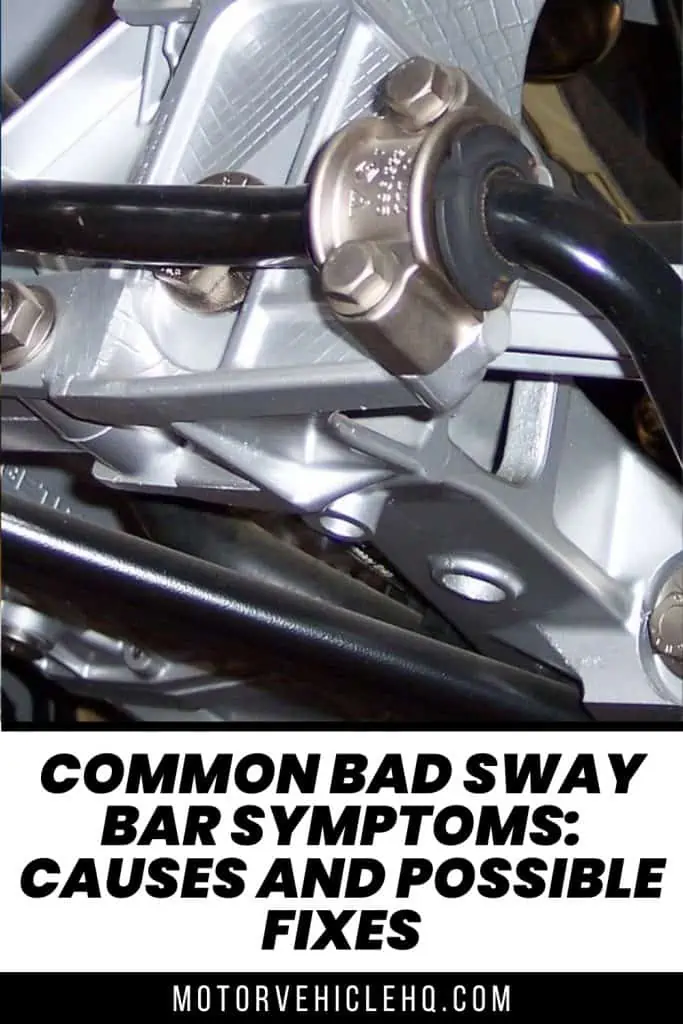
A sway bar in black color by Stahlkocher / CC BY-SA 3.0

Jim Wicks is the founder of MotorVehicleHQ. With over two decades of experience in the automotive industry and a degree in Automotive Technology, Jim is a certified car expert who has worked in various roles ranging from a mechanic, car dealership manager, to a racing car driver. He has owned more than 20 cars over the past 15 years. Ask him about any vehicle you see on the road and he can tell you the make, model and year. He loves the aesthetics of all things cars, and keeps his vehicles in pristine condition.
In his free time, Jim enjoys getting his hands dirty under the hood of a classic car or taking long drives along the country roads. His favorite car? A 1967 Shelby GT500, a true classic that, according to Jim, “represents the pure essence of American muscle.”
